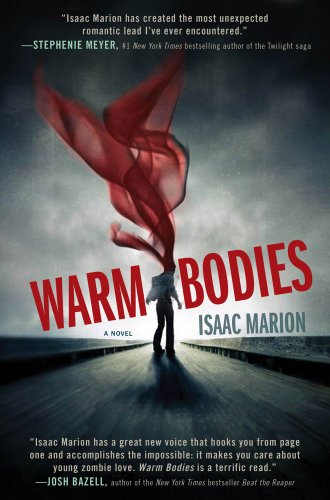The adaptation of Warm Bodies by Isaac Marion into a film was a great idea. Sure, it's cheesy, and no, it does not accurately represent the book, but I still love it. It is no cinematic masterpiece, but I like the fact that both mediums evoke the same responses.
Warm Bodies follows R, a zombie of unknown origin, in his time as one of the living dead. Following the stereotypical zombie lifestyle, R finds a girlfriend, marries, and is given children to look after. He ingests only the living and can only communicate with occasional guttural grunts. R cannot sleep or dream or die.
Then, one hunting trip, R is changed forever.
Upon the ingestion of a certain living being named Perry, R begins to fall in love with Perry's girlfriend, Julie. Amidst the building carnage of the hunt, R protects Julie and brings her back home. Over the days Julie is held captive, her friendship with R transforms him more and more into a living being.
Although Julie returns to her home in the living sector, the transformation in R continues and seemingly infects other living dead. Realizing that the governing bodies (no pun intended) of the living dead, the Boneys, are aware of the contagion and its source, R travels to the living sector in search of Julie.
Once again under R's protection from the impending attack, Julie and R have no choice but to present themselves to the governing officials of the living. Having to convince the living of the living dead's transformation proves more difficult than they anticipated, but in the end, the actions of the living dead provide enough evidence to convince the officials.
Written as R's first-person account of the preceding events, Warm Bodies accentuates the blurred line surrounding the concepts of living and life. It subtly invites readers to consider the meaning of life and love in the unconventional relationship between R and Julie. What a surprise coming from (seemingly) young adult fiction!

No comments:
Post a Comment